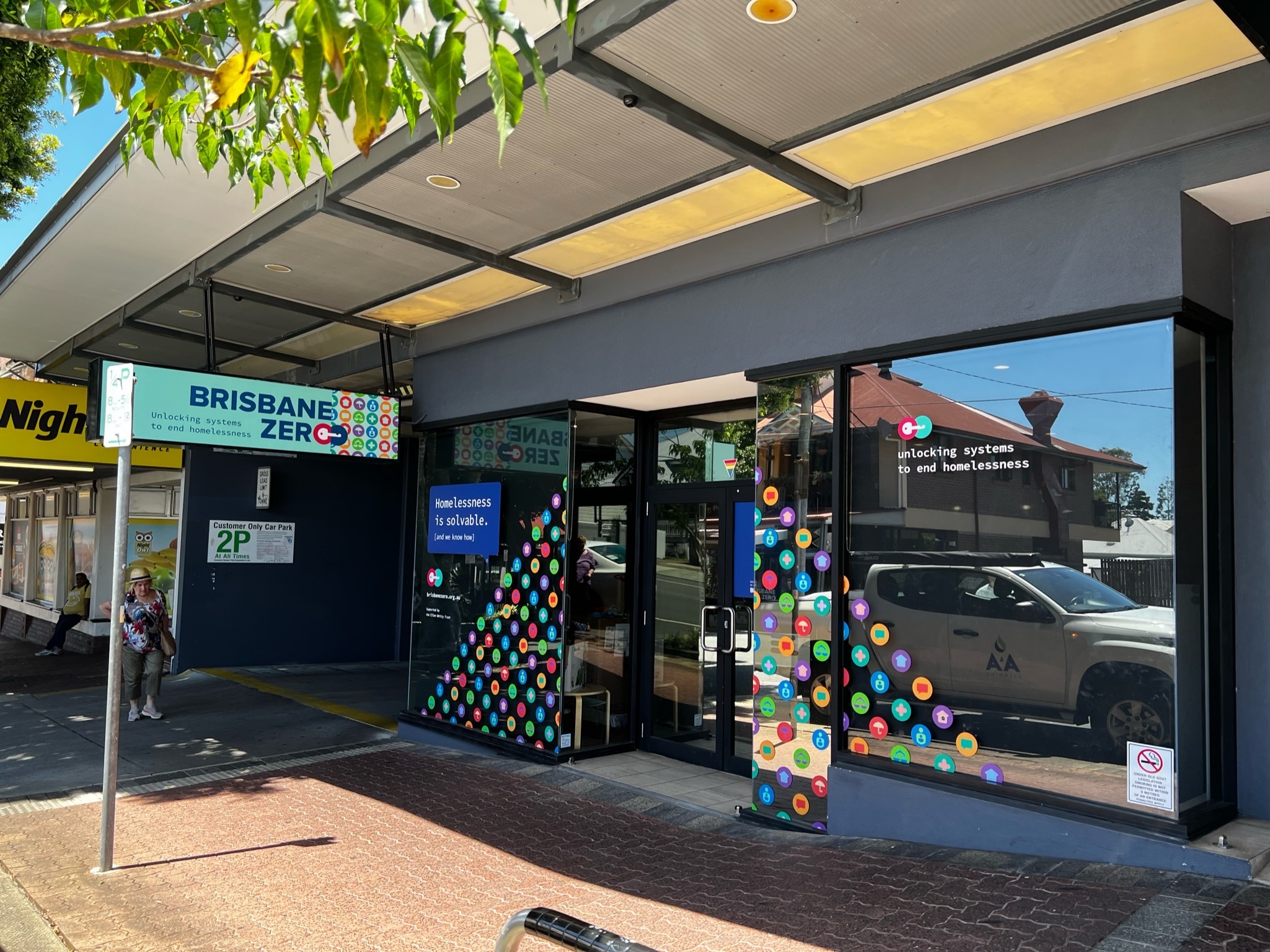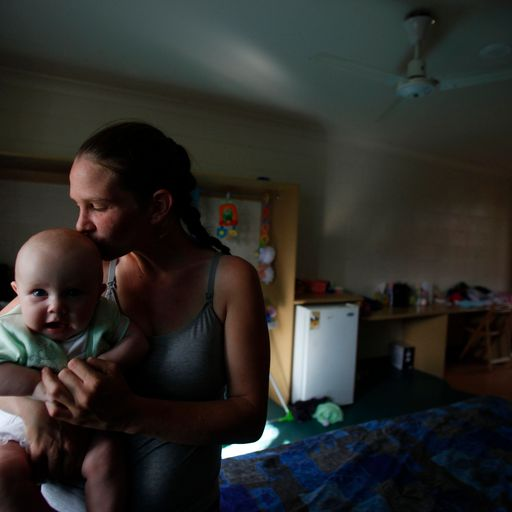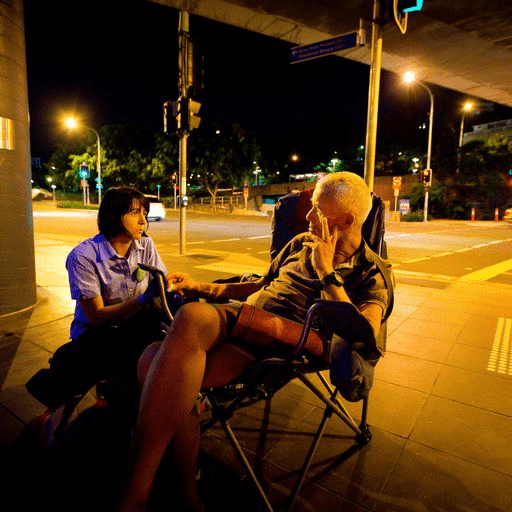With a population of over 1.2 million people, Brisbane is the third largest city in Australia. In January 2023, at least 325 people in Brisbane were known to have slept rough (meaning they were experiencing unsheltered homelessness), 150 of which were also experiencing chronic homelessness. These are some of the most vulnerable members of the community and have often spent the longest amount of time sleeping rough.
In 2013, the best estimate of the average length of time a person experienced homelessness in Brisbane — as estimated by interviews with more than 100 people who were then chronically sleeping rough — was 7.7 years. By 2022, this length of time had been reduced to an average of 4.6 years — a roughly 40% reduction. Through the use of real-time, by-name data, Brisbane has been able to coordinate changes to the homeless response system to more rapidly house many of the community’s residents who have experienced homelessness the longest.
Today, Brisbane is one of 30 communities working to end homelessness as part of the country’s Advance to Zero Campaign, a national initiative of the Australian Alliance to End Homelessness (AAEH). Formally launched in 2022, the Brisbane Zero Campaign, the main initiative of the Brisbane Alliance to End Homelessness, is a collaborative effort to end street homelessness for all single adults and families in Brisbane. As part of Community Solutions’ international partner initiatives, Brisbane has been receiving coaching support from Built for Zero regularly since 2017.

Improvements through by-name data
Brisbane Zero has adapted the Built for Zero approach to ending homelessness to its own context by bringing together community organizations, governments, and health care providers around one table – and by putting data at the center.
In the past, data from the census, conducted every five years, was the main source of information to estimate how many people were experiencing homelessness in the community. However, the community recognized several drawbacks to the information collected via census — particularly because it was not designed to collect data on homelessness. Instead, numbers of people experiencing homelessness were estimated based on other answers in the census survey. Moreover, survey respondents were not known by-name and therefore could not be connected to subsequent support, and the delay in receiving the data after collection rendered it less accurate and less relevant to real-time application.
“The whole purpose of by-name data is to house and support people. So it’s not just collecting data.”
Karyn Walsh
After early efforts to develop and act on person-centered data succeeded in housing more than 800 individuals and families, the team in Brisbane (now called Brisbane Zero) moved away from relying on census data and instead started collecting by-name data of all people sleeping rough in their community, updated in close to real-time. This by-name data allowed the community to understand who and how many people are sleeping rough (or were formerly sleeping rough and are now in temporary accommodation or refuge).
“You do get a lot of personal intelligence about people that can help you,” explained Karyn Walsh, CEO of Micah Projects, a Brisbane-based not-for-profit organization that provides backbone support to Brisbane Zero. “The whole purpose of by-name data is to house and support people. So it’s not just collecting data. It is a triage tool to assist in housing options, health care, and support services to access and transition to housing.”
As of late 2022, seventeen different homeless services organizations contribute to Brisbane Zero’s data collection. In turn, providers can offer more appropriate and effective resources and make ongoing improvements to help people exit homelessness more quickly.
As Carmel Haugh, Brisbane Zero Systems Change Lead said, “The visibility that comes from the data sharing reinforces our collaboration with services and those that are providing the housing and supports.”
Decrease in chronicity
How did the Brisbane community achieve such a reduction in the length of time a person experienced rough sleeping?
“We’ve focused on permanent housing for the last 10 to 15 years in Brisbane,” explained Jim DeCouto, Home for Good Cluster Lead at Micah Projects.
In 2012, the community opened its first large supportive housing property containing 146 units, with 76 of those units designated for rough sleepers who have experienced homelessness the longest and/or were prioritized as being most vulnerable.
By coordinating with the Department of Housing, the Brisbane Zero team has been able to gain crucial flexibility with administrative processes to more quickly move rough sleepers into housing through weekly service coordination meetings. An influx of additional funding has also allowed the community to increase their investment in support services so people don’t return to homelessness.
“Having the by-name list, micro-monitoring that, and registering it through the service coordination housing meetings each week, we have seen quite a drop in the average length of time people are staying homeless — down to 4.6 years in 2022,” Haugh said.

Strengthening data collection
Since 2019, Micah Projects has been a significant player in the progress made by Brisbane Zero. Their team has provided backbone support by implementing Built for Zero methodology across direct services, which includes establishing and improving real-time, by-name lists. Analysis of this collected data has helped demonstrate the needs and characteristics of people experiencing homelessness in Brisbane.
“The by-name list is shared regularly in the community, and it’s managed by Brisbane Zero. So it makes visible our progress with individuals and gives a clearer understanding of what systems impact the inflow and outflow of people from homelessness in our community,” Walsh explained. “I think having the data to inform ourselves and all stakeholders assists us in communicating that homelessness is solvable and not a wicked problem in our community.”
In parallel with the A to Z methodology, Micah Projects has trained and implemented staff in using a common triage tool, called the Vulnerability Index – Service Prioritization Decision Assistance Tool, or VI-SPDAT. Data collected via this tool has populated the by-name list and helped them track the reduction of the length of time people have been sleeping rough since 2011.
This comprehensive data can then paint a clearer picture of the needs and systems that impact people experiencing homelessness in the Brisbane community, while also directly supporting people to be housed and supported.

Looking ahead to other populations
In the coming years, the Brisbane Zero project plans to continue their journey to reach functional zero for chronic rough sleepers. They will continue using their data to demonstrate evidence-based needs and to advocate for increases in supportive housing to help them reach this goal.
The community is also focused on collecting data for another population — families experiencing homelessness. Brisbane Zero was the first community in Advance to Zero to track this cohort. The team knows this is an emerging issue in Brisbane because of increased numbers of families rough sleeping on their by-name list. More funding has been funneled in the direction of family support — to provide more affordable housing, for example — as a result of their by-name list indicating the increased need for this population.
“Borrowing a line from our colleagues at the Corporation for Supportive Housing, data is for us the guide, but it’s not the destination,” Haugh explained.
“Data matters — but only in service of designing more just and equitable systems that will actually make a difference. Especially rewarding for our teams is seeing our most vulnerable individuals and families securely housed by our collaborative efforts.”


